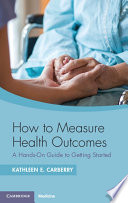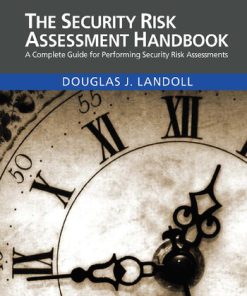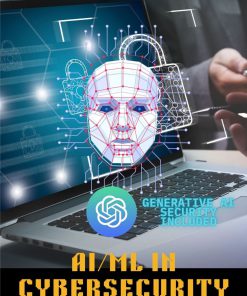How to Measure Anything in Cybersecurity Risk 2nd Edition by Douglas W Hubbard, RICHARD SEIERSEN ISBN 9781119892304 1119892309
$50.00 Original price was: $50.00.$25.00Current price is: $25.00.
How to Measure Anything in Cybersecurity Risk 2nd Edition by Douglas W Hubbard, RICHARD SEIERSEN – Ebook PDF Instant Download/Delivery: 9781119892304 ,1119892309
Full download How to Measure Anything in Cybersecurity Risk 2nd Edition after payment

Product details:
ISBN 10: 1119892309
ISBN 13: 9781119892304
Author: Douglas W Hubbard, RICHARD SEIERSEN
A start-to-finish guide for realistically measuring cybersecurity risk
In the newly revised How to Measure Anything in Cybersecurity Risk, Second Edition, a pioneering information security professional and a leader in quantitative analysis methods delivers yet another eye-opening text applying the quantitative language of risk analysis to cybersecurity. In the book, the authors demonstrate how to quantify uncertainty and shed light on how to measure seemingly intangible goals. It’s a practical guide to improving risk assessment with a straightforward and simple framework.
Advanced methods and detailed advice for a variety of use cases round out the book, which also includes:
- A new “Rapid Risk Audit” for a first quick quantitative risk assessment.
- New research on the real impact of reputation damage
- New Bayesian examples for assessing risk with little data
- New material on simple measurement and estimation, pseudo-random number generators, and advice on combining expert opinion
Dispelling long-held beliefs and myths about information security, How to Measure Anything in Cybersecurity Risk is an essential roadmap for IT security managers, CFOs, risk and compliance professionals, and even statisticians looking for novel new ways to apply quantitative techniques to cybersecurity.
How to Measure Anything in Cybersecurity Risk 2nd Edition Table of contents:
PART I: Why Cybersecurity Needs Better Measurements for Risk
CHAPTER 1: The One Patch Most Needed in Cybersecurity
Insurance: A Canary in the Coal Mine
The Global Attack Surface
The Cyber Threat Response
A Proposal for Cybersecurity Risk Management
Notes
CHAPTER 2: A Measurement Primer for Cybersecurity
The Concept of Measurement
A Taxonomy of Measurement Scales
The Object of Measurement
The Methods of Measurement
Notes
CHAPTER 3: The Rapid Risk Audit
The Setup and Terminology
The Rapid Audit Steps
Some Initial Sources of Data
The Expert as the Instrument
Supporting the Decision: Return on Controls
Doing “Uncertainty Math”
Visualizing Risk With a Loss Exceedance Curve
Where to Go from Here
Notes
CHAPTER 4: The Single Most Important Measurement in Cybersecurity
The Analysis Placebo: Why We Can’t Trust Opinion Alone
How You Have More Data than You Think
When Algorithms Beat Experts
Tools for Improving the Human Component
Summary and Next Steps
Notes
CHAPTER 5: Risk Matrices, Lie Factors, Misconceptions, and Other Obstacles to Measuring Risk
Scanning the Landscape: A Survey of Cybersecurity Professionals
What Color Is Your Risk? The Ubiquitous—and Risky—Risk Matrix
Exsupero Ursus and Other Fallacies
Communication and Consensus Objections
Conclusion
Notes
PART II: Evolving the Model of Cybersecurity Risk
CHAPTER 6: Decompose It
Decomposing the Simple One‐for‐One Substitution Model
More Decomposition Guidelines: Clear, Observable, Useful
A Hard Decomposition: Reputation Damage
Conclusion
Notes
CHAPTER 7: Calibrated Estimates
Introduction to Subjective Probability
Calibration Exercise
More Hints for Controlling Overconfidence
Conceptual Obstacles to Calibration
The Effects of Calibration
Beyond Initial Calibration Training: More Methods for Improving Subjective Judgment
Notes
Answers to Trivia Questions for Calibration Exercise
CHAPTER 8: Reducing Uncertainty with Bayesian Methods
A Brief Introduction to Bayes and Probability Theory
An Example from Little Data: Does Multifactor Authentication Work?
Other Ways Bayes Applies
Notes
CHAPTER 9: Some Powerful Methods Based on Bayes
Computing Frequencies with (Very) Few Data Points: The Beta Distribution
Decomposing Probabilities with Many Conditions
Reducing Uncertainty Further and When to Do It
More Advanced Modeling Considerations
Wrapping Up Bayes
Notes
PART III: Cybersecurity Risk Management for the Enterprise
CHAPTER 10: Toward Security Metrics Maturity
Introduction: Operational Security Metrics Maturity Model
Sparse Data Analytics
Functional Security Metrics
Functional Security Metrics Applied: BOOM!
Wait‐Time Baselines
Security Data Marts
Prescriptive Analytics
Notes
CHAPTER 11: How Well Are My Security Investments Working Together?
Security Metrics with the Modern Data Stack
Modeling for Security Business Intelligence
Addressing BI Concerns
Just the Facts: What Is Dimensional Modeling, and Why Do I Need It?
Dimensional Modeling Use Case: Advanced Data Stealing Threats
Modeling People Processes
Conclusion
Notes
CHAPTER 12: A Call to Action
Establishing the CSRM Strategic Charter
Organizational Roles and Responsibilities for CSRM
Getting Audit to Audit
What the Cybersecurity Ecosystem Must Do to Support You
Integrating CSRM with the Rest of the Enterprise
Can We Avoid the Big One?
APPENDIX A: Selected Distributions
Distribution Name: Triangular
Distribution Name: Binary
Distribution Name: Normal
Distribution Name: Lognormal
Distribution Name: Beta
Distribution Name: Power Law
APPENDIX B: Guest Contributors
Appendix B Contents
Decision Analysis to Support Ransomware Cybersecurity Risk Management
Bayesian Networks: One Solution for Specific Challenges in Building ML Systems in Cybersecurity
The Flaw of Averages in Cyber Security
Password Hacking
How Catastrophe Modeling Can Be Applied to Cyber Risk
Index
People also search for How to Measure Anything in Cybersecurity Risk 2nd Edition:
borrow how to measure anything in cybersecurity risk
how to measure anything in cyber risk
how to measure anything in cyber security
how to measure anything in cybersecurity pdf
measure anything in cybersecurity
Tags: Douglas W Hubbard, RICHARD SEIERSEN, Measure Anything, Cybersecurity Risk
You may also like…
Uncategorized
Technique - Electronics: Home Electronics
Medicine - Health-Related Professions
How to Measure Health Outcomes A Hands On Guide to Getting Started Kathleen E. Carberry
Computers - Information Systems
Information Risk Management 2nd Edition by David Sutton ISBN 9781780175720 1780175728
Business & Economics - Mathematical Economics
Computers - Security
AI ML in Cybersecurity Your go to guide to understand AI ML in Cybersecurity 1st Edition Malini Rao
Computers - Security
Arts - Graphic Arts
Uncategorized











